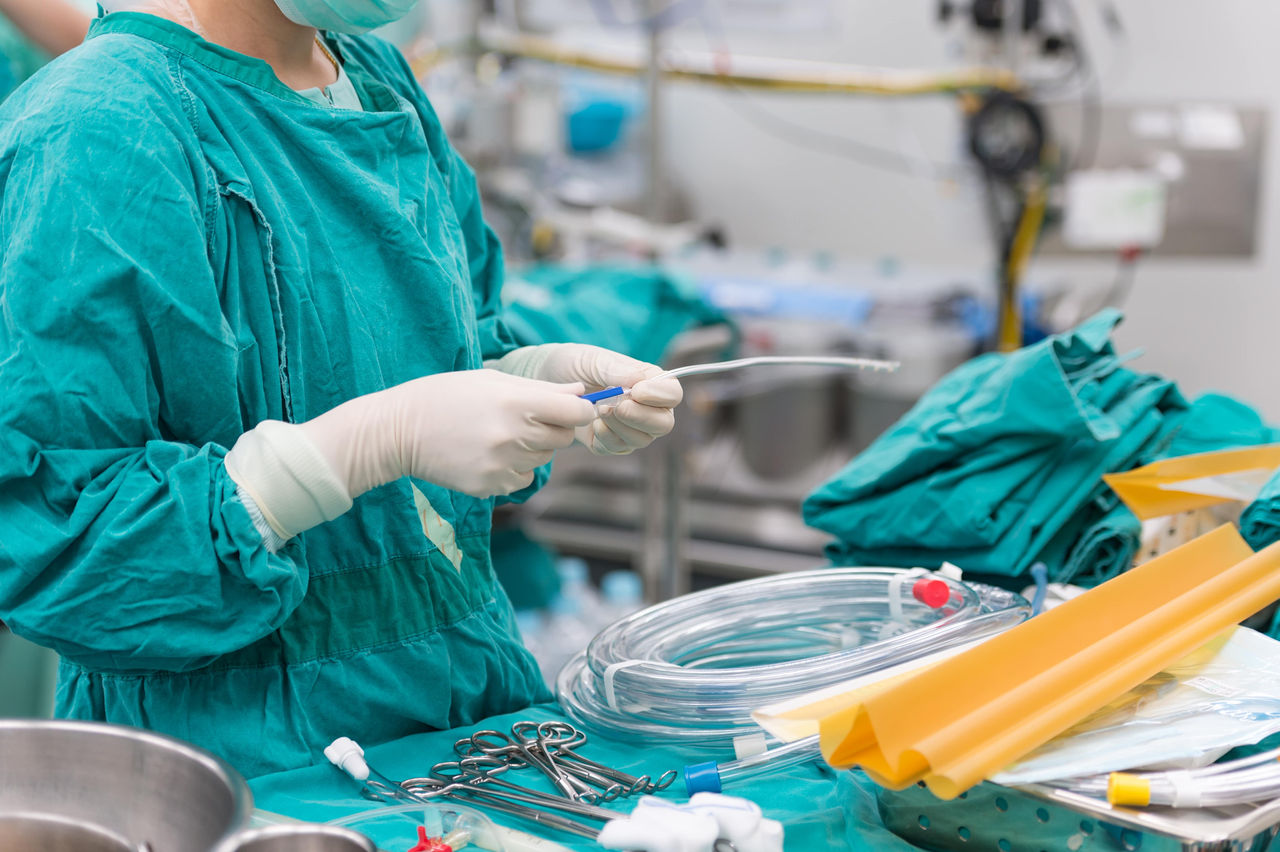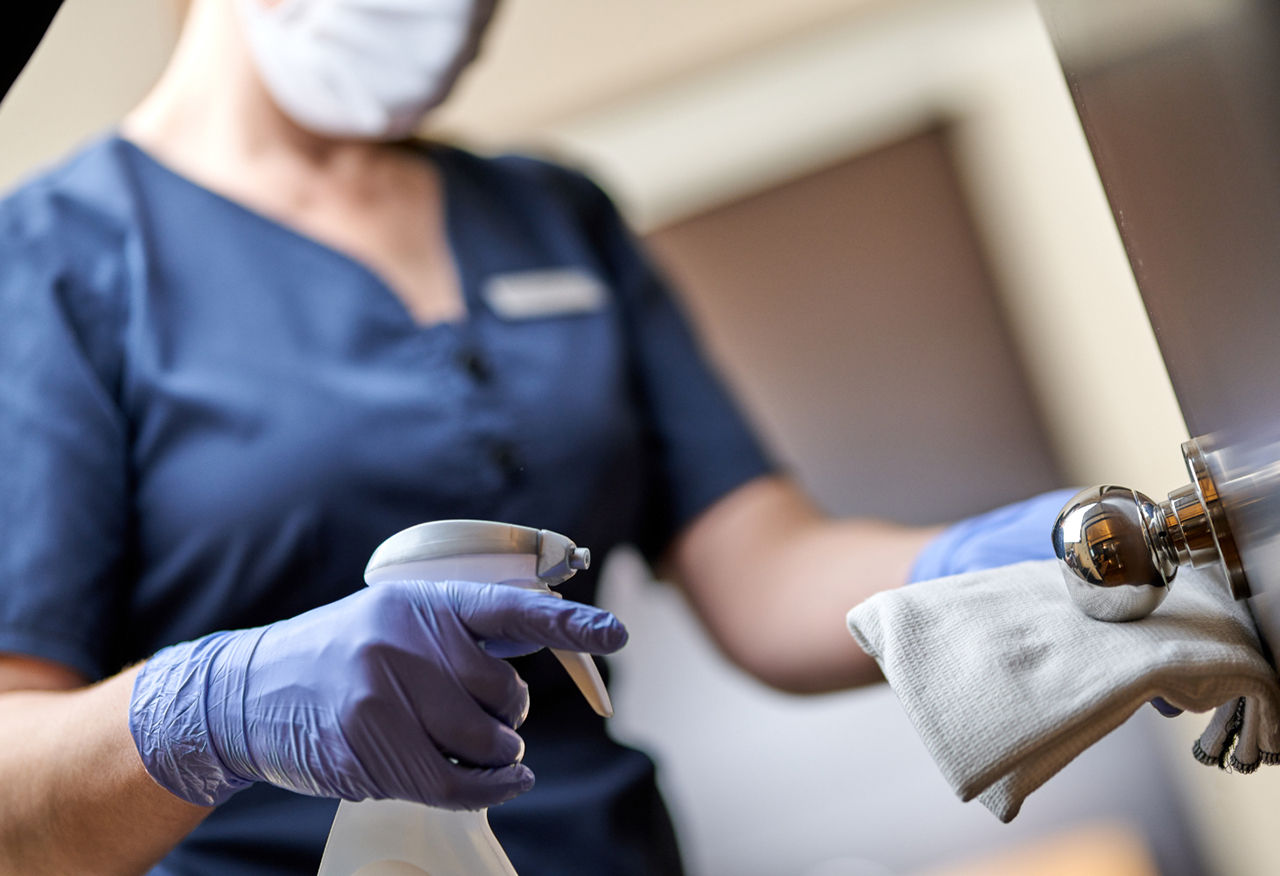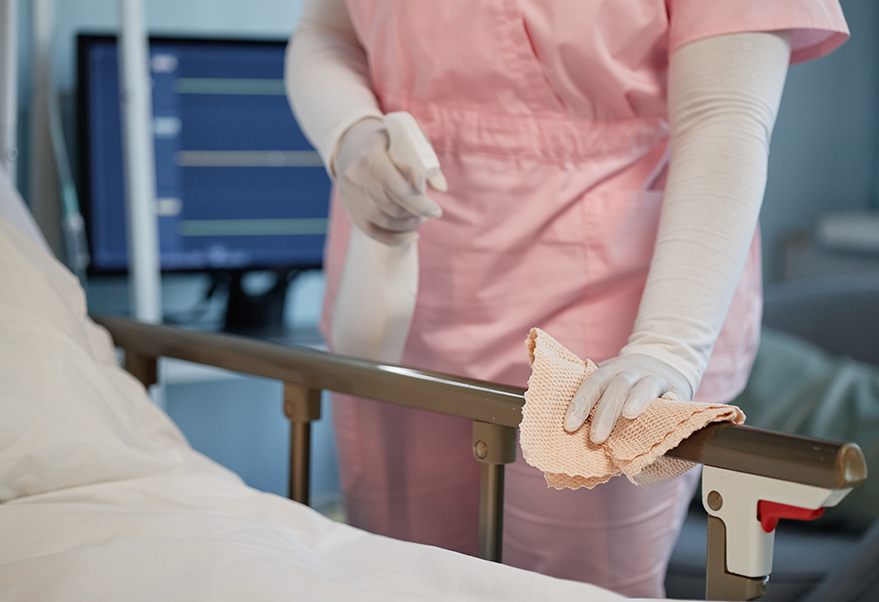Raising the bar: understanding the new standards for disinfectant efficacy in medical settings

In the world of healthcare, where every second counts and every surface could harbor a threat, disinfectants are more than just cleaning agents - they are critical tools in the fight against infection.
But how can we be sure that these disinfectants are truly effective?
The answer lies in rigorous, standardized testing.
Over the past few decades, the standards governing surface disinfectant efficacy have evolved significantly and today, they are more comprehensive and demanding than ever before.
This article explores the journey of disinfectant standardization, the importance of harmonized testing and what healthcare professionals need to know to ensure they’re using products that meet the highest efficacy benchmarks.
A journey toward harmonization of disinfectant standards
The story begins in 1961, when the European Committee for Standardization (CEN) was established. Its mission was to unify standards across Europe, including those for chemical disinfectants. By the 1980s, the first formal standards for medical disinfectants were introduced, primarily focused on ensuring efficacy in healthcare environments.
However, these early standards were fragmented. Each country had its own methods, and many companies relied also on in-house testing protocols that lacked consistency and scientific rigor. These tests often failed to simulate real-world conditions, leading to products that might perform well in the lab but fell short in practice and made products comparison difficult.
Recognizing this gap, the 1990s marked the beginning of a harmonization effort in the EU. This initiative aimed to align national standards, incorporate the latest scientific research, and address emerging pathogens. The result was a more robust and reliable framework for evaluating disinfectant efficacy.
Why standardization matters for infection prevention
Standardization is not just a regulatory formality; it’s a cornerstone of effective infection prevention. In healthcare settings, where vulnerable patients are at risk, the consequences of using an ineffective hospital disinfectant can be severe.
Harmonized standards ensure that disinfectants are tested under conditions that mimic real-life use. They provide a consistent benchmark for evaluating performance, enabling healthcare providers to compare products with confidence.
Moreover, these standards drive innovation by encouraging manufacturers to continually improve their formulations in terms of effectiveness and risk mitigation.
Perhaps most importantly, standardization enhances safety. By adhering to established protocols, manufacturers can strive to ensure their products contribute to the protection of patients and healthcare workers while managing any risks they might potentially pose to both people and the environment.
For more on how advanced disinfectant technology supports safer hospitals, see our article: Reducing HAIs with advanced disinfection.
EN 14885 the benchmark for disinfectant efficacy
At the heart of disinfectant efficacy testing in Europe is EN 14885. This overarching standard outlines the laboratory methods required to support claims of antimicrobial activity. It applies to products used in human medicine, veterinary area (animal husbandry), food production, and institutional settings.
EN 14885 introduces a tiered testing approach:
- Phase 1 tests are basic suspension tests that assess whether active substances have any antimicrobial activity at all.
- Phase 2, Step 1 tests simulate practical conditions in suspension form, such as the presence of organic matter.
- Phase 2, Step 2 tests evaluate the product’s performance on materials, again under simulated real-world conditions.
- Phase 3 tests aim to assess efficacy in actual field conditions.
This structured approach ensures that products are not only theoretically effective but also practical and reliable in the environments where they are most needed.
Setting the gold standard for surface disinfectants
In healthcare environments, the presence of resilient pathogens poses a critical threat. To effectively manage this risk, the choice of disinfectant must be validated using efficacy testing that accurately simulates real-life application - this is the role of Phase 2, Step 2 carrier tests. For products with mechanical action, such as wipes, EN 16615 is the mandatory Phase 2, Step 2 standard required to prove bactericidal and yeasticidal efficacy. This test provides the most reliable simulation of actual wiping procedures in a laboratory setting.
Recently new phase 2 step 2 standard for sporicidal efficacy testing against C. difficile spores was published. EN 17846 simulates surface disinfection with mechanical action (wiping) and is also mandatory to have compliant sporicidal claim against C. difficile. To ensure that disinfectants meet this challenge, European standards have evolved to include rigorous, multi-phase testing protocols that simulate real-world conditions.
The current gold standard for evaluating products with mechanical action (wiping) are suspension tests like EN 13727 and EN 13624 in combination with EN 16615 to confirm bactericidal /yeasticidal claim as well as EN 17126 in combination with EN 17846 for sporicidal efficacy.
From industrial to clinical: a shift in focus
Historically, the standard used to evaluate sporicidal activity was EN 13704. While this test was widely accepted, it was primarily designed for industrial applications and lacked the specificity and stringency required for clinical environments. It focused on a limited range of organisms and conditions, which meant that products passing EN 13704 might not perform adequately in the complex, high-risk settings of hospitals and clinics.
Recognizing this gap, the European Committee for Standardization introduced EN 17126 in 2019. This standard marked a turning point by establishing a more demanding suspension test tailored specifically for healthcare. Unlike its predecessor, EN 17126 requires a higher level of microbial reduction and includes more challenging test conditions, such as the presence of specific for healthcare applications organic load and a broader spectrum of test organisms, including Bacillus cereus, Bacillus Subtilis and Clostridioides difficile spores.
| Testing | EN 13704 | EN 17126 |
|---|---|---|
| Reduction | 3 log | 4 log |
| Soiling | Clean: bovine albumin 0,3g/l Dirty: bovine albumin 3g/l | Clean: bovine albumin 0,3g/l Dirty: bovine albumin 3g/l and sheep erythrocytes 3g/l |
| Mandatory organism | B. Subtilis spores | Sporicidal activity: B. Subtilis spores B. Cereus spores Sporicidal activity against C. diff. C. diff. spores |
The role of carrier testing: EN 17846
While suspension tests are valuable for assessing a disinfectant’s basic efficacy, they do not fully replicate how products are used in practice—especially on surfaces. That’s where specific carrier tests are coming into play.
EN 17846, introduced in November 2023, is carrier test which evaluates the effectiveness of disinfectants against C. difficile spores on non-porous surfaces, such as stainless steel or plastic, for wiping application.
EN 17846 simulates real-world application by incorporating mechanical action (wiping) and realistic soiling conditions. It provides a more accurate picture of how a disinfectant performs during routine medical cleaning and disinfection procedures in healthcare facilities.
These standards represent a significant advancement in how disinfectants are assessed for their ability to kill spores, particularly in healthcare settings.
A dual approach to assurance
Together, EN 17126 and EN 17846 form a comprehensive framework for validating sporicidal claims for products which require wiping (mechanical action), whereas EN 13727, EN 13624 and EN 16615 provide basis for bactericidal and yeasticidal efficacy evaluation. EN 13727, EN 13624 and EN 17126 ensures that a disinfectant is fundamentally capable of killing pathogens in suspension, while EN 16615 and EN 17846 confirms that it remains effective when applied to contaminated surfaces under practical conditions.This dual approach - combining Phase 2, Step 1 (suspension test) and Phase 2, Step 2 (carrier test) - is now the benchmark for any product claiming efficacy for wiping application (products with mechanical action required) in healthcare. It ensures that disinfectants are not only theoretically potent but also operationally reliable in the environments where they are most needed.
The danger of misleading claims
Despite the availability of clear standards, not all disinfectant claims are created equal. Some products on the market still rely on outdated or non-comparable testing methods which do not align with EN standards.
Common red flags include:
- Missing references to mandatory standards like EN 16615 for surface disinfectant wipes. Claims based on incorrect or non-standard test organisms.
- Unrealistically short contact times that do not meet EN requirements.
- Lack of clarity about testing conditions, such as whether the product was tested under “dirty” conditions that simulate real-world contamination.
These misleading claims can give a false sense of security and may result in inadequate disinfection, increasing the risk of healthcare-associated infections.
The appropriate approach to a claim set for disinfectants is to provide detailed information about any efficacy claims, including:
- The specific EN standards used for testing
- The organisms tested
- The contact time required for efficacy
- The soiling conditions under which the tests were conducted
For example, a disinfectant cleaner wipe that claims to be bactericidal, yeasticidal, and virucidal should reference EN 13727, EN 13624, EN 16615 and EN 14476 respectively, as well as specifying that tests were conducted under “medical dirty” conditions with a contact time no longer than 5 minutes.
Final thoughts: choosing the best disinfectant for healthcare facilities
Infection prevention is a complex challenge, but one thing is clear: effective disinfection starts with reliable, standardized testing. By understanding and applying the latest EN standards - described in EN 14885, - Infection Prevention and Control (IPC) Teams can make informed choices about the products they use.
As pathogens evolve and new threats emerge, the importance of rigorous efficacy testing will only grow. Staying informed, asking the right questions, and demanding transparency from manufacturers are essential steps toward safer, cleaner healthcare environments.
Your path to market - simplified and supported
At Arxada, we understand the regulatory and scientific complexities behind bringing effective disinfectants to market. That’s why we offer NUGEN® disinfectant formulations that can be introduced across EU Member States under your own brand.
Our solutions are more than just products - they’re a partnership.
We ensure that every formulation meets national notification requirements and complies with the latest safety and efficacy standards.
Ready to bring a proven, compliant disinfectant to market? Contact us today to discuss your business case.
Don't gamble with your company's future. Choose certainty and security with Arxada.
Want to learn more?




